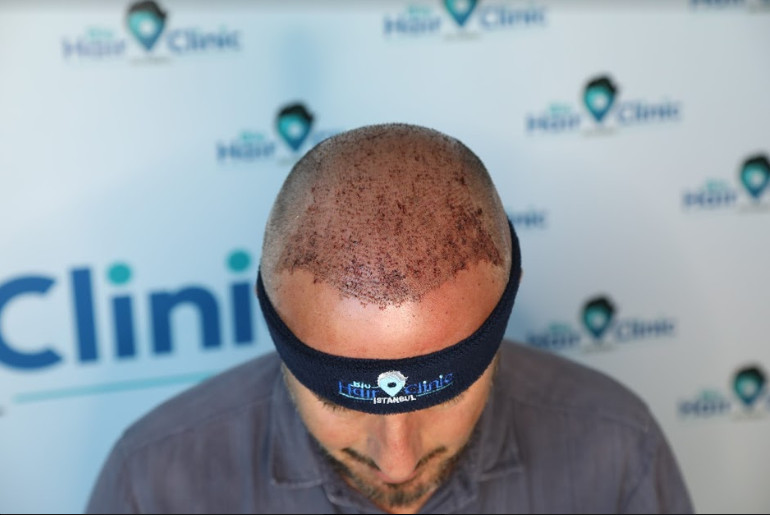
Hair transplant surgery is a popular solution for those experiencing hair loss. While the procedure itself is safe and effective, it is essential to understand the healing process. One of the most common concerns after a hair transplant is the formation of scabs. In this article, we will explore why scabs form after a hair transplant and how to treat them for a smooth recovery.
Why Do Scabs Form After a Hair Transplant?
Scabs form after a hair transplant as a natural part of the healing process. When hair follicles are implanted into the scalp, tiny incisions are made, causing minor wounds. The body responds by clotting blood at these sites, leading to scab formation. These scabs protect the healing grafts, prevent infection, and help the transplanted follicles establish themselves in the scalp. They typically fall off within 7–14 days as the skin heals.
1. Healing Response of the Body
When small incisions are made in the scalp to implant hair follicles, the body responds by forming scabs. These scabs act as a barrier against infections and help in the healing process.
2. Blood and Plasma Clotting
During the procedure, some bleeding occurs. The blood and plasma clot, leading to scab formation. This is a natural way for the body to protect the newly transplanted hair grafts.
3. Protection Against Infection
Scabs prevent bacteria and other harmful substances from entering the wounds, reducing the risk of infections and ensuring proper healing.
How Long Do Scabs Last After a Hair Transplant?
Typically, scabs start forming within the first 24 hours after the hair transplant. They usually last for about 7 to 10 days before naturally falling off. However, proper care can help speed up the healing process and reduce discomfort.
How to Treat Scabs After a Hair Transplant
Scabs after a hair transplant form as part of the healing process. They develop when tiny incisions are made in the scalp to implant hair follicles. The body responds by clotting blood at the incision sites, forming scabs. These scabs protect the healing tissue underneath and are an essential part of recovery.
It’s important to care for the scabs properly to ensure the success of the transplant and avoid complications like infection or dislodging of the grafts. Typically, gentle washing, moisturizing, and following post-operative instructions are recommended to help the scabs heal and fall off naturally.
1. Follow Your Doctor’s Instructions
Your surgeon will provide specific aftercare guidelines. Follow them carefully to avoid complications and ensure optimal healing.
2. Keep Your Scalp Clean
Use a mild shampoo recommended by your doctor.
Wash your scalp gently without rubbing or scratching.
Rinse with lukewarm water to avoid irritation.
3. Avoid Picking at the Scabs
Picking or scratching scabs can lead to infections and may affect hair growth.
Let the scabs fall off naturally to avoid damaging the transplanted hair follicles.
4. Stay Hydrated
Drink plenty of water to keep your skin hydrated.
Proper hydration helps in faster healing and prevents excessive dryness.
5. Use a Moisturizing Spray
Some surgeons recommend using a saline spray to keep the scalp hydrated.
This can help loosen the scabs and make them fall off naturally.
6. Avoid Direct Sunlight
Protect your scalp from the sun by wearing a loose-fitting hat.
Sun exposure can dry out the scabs and prolong the healing process.
7. Follow a Healthy Diet
Eating a balanced diet rich in vitamins and minerals can promote faster healing.
Foods rich in Vitamin C, E, and protein can help in skin repair.
When to Seek Medical Attention
refers to the appropriate situations or conditions in which a person should contact a healthcare professional or visit a medical facility. This typically includes severe symptoms, persistent or worsening health issues, sudden injuries, or any signs of a medical emergency that require professional evaluation and treatment.
Severe pain or swelling.
Signs of infection like redness, pus, or a foul odor.
Excessive bleeding or prolonged scab formation beyond two weeks.
Conclusion
Scabs are a normal and essential part of the healing process after a hair transplant. By following proper aftercare, keeping your scalp clean, and avoiding unnecessary irritation, you can ensure a smooth recovery. Remember, patience is key, and soon, you will enjoy the full results of your hair transplant. If you experience any unusual symptoms, always consult your doctor for guidance.
By understanding why scabs form after a hair transplant and how to treat them, you can take the necessary steps to ensure the best outcome for your hair restoration journey.
